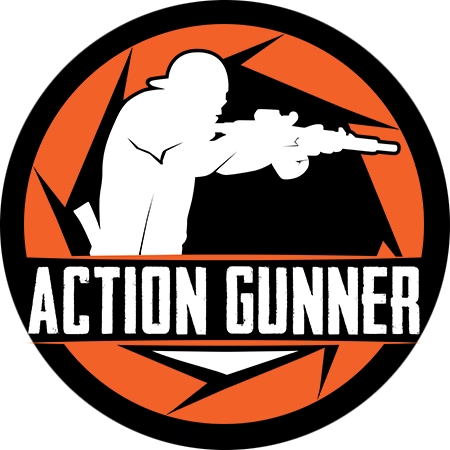
The Tactical Games are the ultimate test of fitness and shooting proficiency. Competitors navigate physically demanding courses while engaging in various shooting tasks, requiring not only physical endurance but also a reliably tuned rifle. This guide will help you choose the right rifle setup for The Tactical Games.
Choosing the Right Rifle
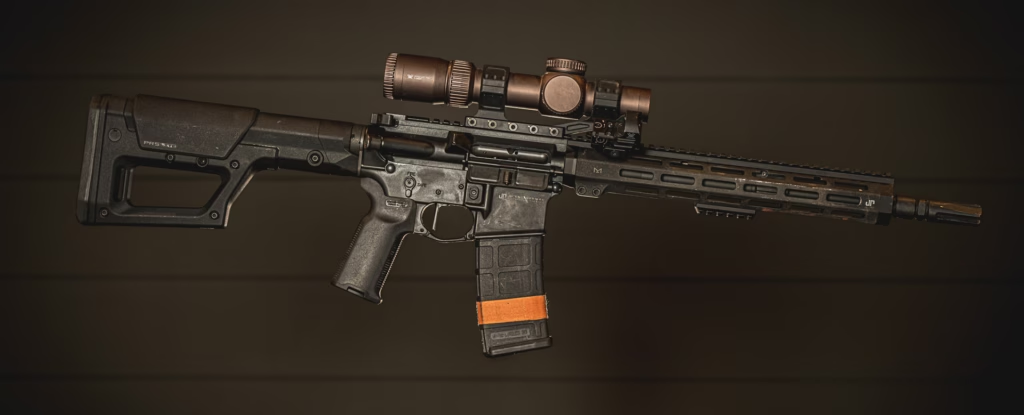
Foundation of Your Setup
For The Tactical Games, a rifle chambered in .223 Remington or larger is required. The AR-15 is a popular choice due to its availability, modularity, reliability, and accuracy. Your rifle needs to be capable of quick, close-range engagements while remaining precise at longer distances.
Customization for Tactical Games Rifle Setup
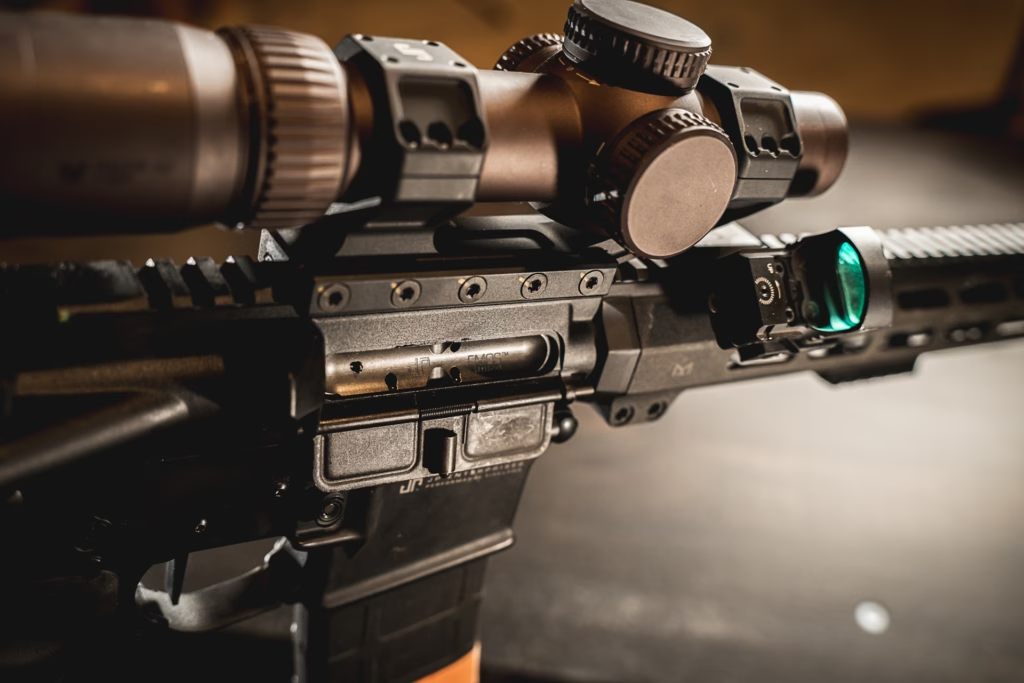
Optics
Gone are the days of competitors favoring non-magnified primary optics in this sport such as the Eotech Holographic sights or Vortex Spitfire with the etched reticle. Even with a flip-up 3x magnifier, these optics are now less than ideal for a majority of the target engagements going forward (you’re shooting small shapes on paper at distance).
A low-power variable optic (LPVO) is an ideal choice for versatility. With quick target acquisition at 1x and precise shots at higher magnifications, an LPVO suits the varied demands of The Tactical Games. The 2024 rules now allow an offset red dot sight (RDS), which offers a significant advantage for their dynamic 2-Gun stages requiring rapid transitions.
Since the introduction of offset red dot sights, we’ve even seen some top-level competitors move into minimum magnification levels of 3x or more on their primary optic for better target visibility with a higher top end magnification.
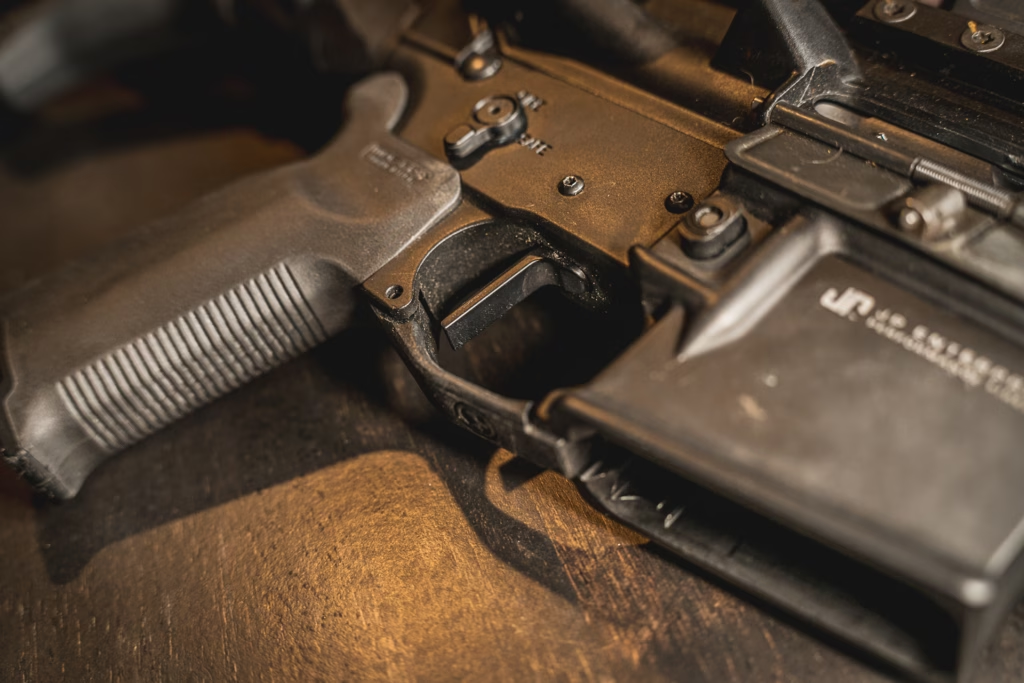
Trigger
A quality trigger with a clean break can significantly improve accuracy. A trigger with a light to moderate pull weight is ideal—light enough for precision shots but not so light that it becomes a liability when you’re heavily fatigued.
You don’t have to go crazy here, anything polished and lighter than mil-spec will work provided you have enough time behind it.
Barrel
Barrel length will affect maneuverability and ballistic performance. A 16-inch barrel strikes a good balance between handling and velocity, making it suitable for the diverse shooting engagements in The Tactical Games. I recommend no shorter than 13.5″ for velocity’s sake.

Muzzle Device
Only flash hiders, suppressors, or blast-forward devices are permitted. Ported compensators that redirect gas sideways are not allowed.
Do not over-complicate the selection of your muzzle device. I see plenty of people turned down at check-in because they unknowingly chose a flash hider with ports that redirect gas. If in doubt, grab an $8 A2 birdcage and call it good.
Stock
An adjustable stock is ideal for a proper fit, allowing shooters of different body types and wearing gear to maintain a comfortable and stable shooting position. This is especially important with consideration for your plate carrier.
This isn’t a stern recommendation, however, as I personally find fixed stocks such as the Magpul PRS Lite to be a great fit on my rifle.
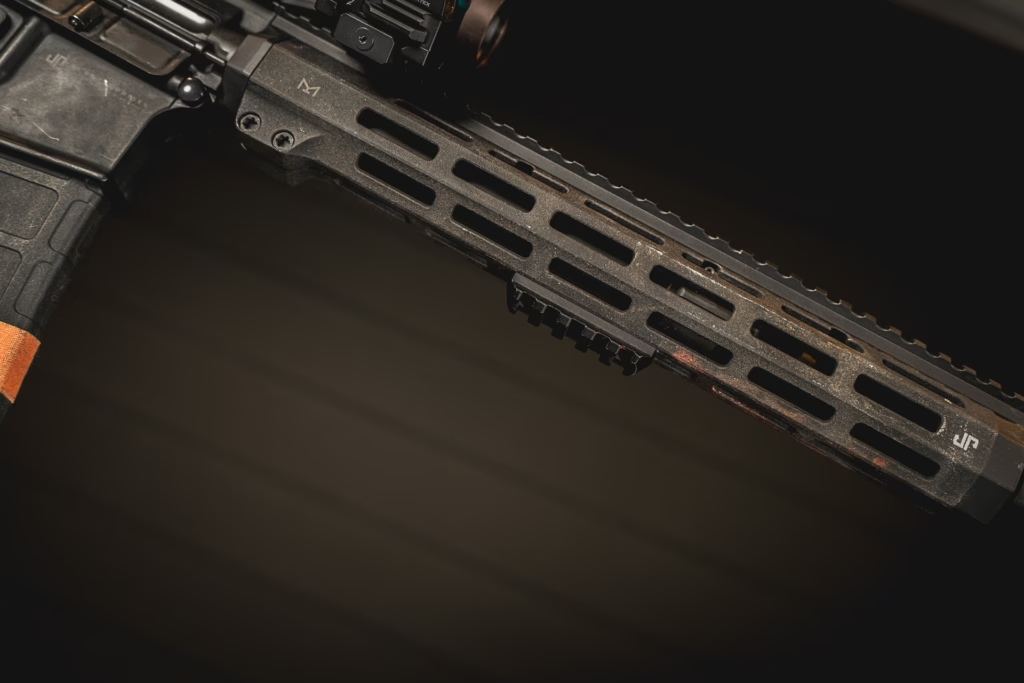
Handguard
A free-floating handguard improves accuracy and provides ample space for mounting accessories. M-LOK or KeyMod systems are popular for their light weight and modularity.
Rail Accessories
Avoid anything too cumbersome, less is more here. Skip the vertical foregrip, weapon-mounted lights, etc – they do nothing but get caught up on obstacles or v-tac barricades.
Instead, favor a lower-profile barricade stop or Picatinny rail section that you can use for extra stability/bracing on barricades when needed.
Grip
Ergonomic grips can reduce fatigue and help maintain control during precise fire and transitions between shooting positions.
Sling
A sling is required. A good sling will provide comfort and versatility to get in and out of as needed, as well as stability for free-standing/unsupported shots.
Magazines
Most of the stages at The Tactical Games are a prescribed round count, meaning they may have you load four rifle mags to exactly 15 rounds each. I prefer standard 30 round magazines, but there are occasions where a shorter 20 round magazine allows you to better stabilize your rifle on a prop or rooftop while shooting.
Bring a minimum of 5 magazines (I bring 5 30 round and 5 20 round). Make sure they are in good working order and eject freely from your magwell when the mag release is hit. If they’re sticking, spend the $10 and replace it.
Rifle Weight Considerations
You’ll be moving with your rifle a lot. Every ounce matters when you’ve got it slung to your back for the long movement (sometimes up to 5 miles depending on division).
Lightweight components can reduce overall fatigue and improve agility during physical challenges. However, too light a rifle can increase felt recoil and reduce stability, so finding a balance somewhere in here is your goal.
It is also worth noting that your rifle is now grounded at the firing line for most of the stages, so lightweight isn’t as critical as it used to be.
Prioritize Reliability
Your rifle needs to function flawlessly despite dust, mud, rain, cold and sweltering heat. Regular maintenance and the use of high-quality parts can increase reliability.
Avoid overly complicated modifications that could become points of failure under harsh conditions – I recommend staying away from lightweight bolt carrier groups and suppressors for this very reason unless you are intimately familiar with such a setup and are diligent with maintenance.
If this is a purpose-built rifle for The Tactical Games, you can certainly avoid a tunable gas block to save some money. While I have them on all of my rifles for other sports like 3-Gun, I typically open them up to ensure reliability for TTG as two-shot splits are less important here.
Ammunition Selection

Choose ammunition that performs consistently and is matched to your barrel’s twist rate. For The Tactical Games, you’ll be doing a lot of precise shooting. With every miss costing you 10 seconds, it’s worth considering heavier-grain ammo for both tight groups in medium range and better ballistic performance for the 150 to 400-yard engagements.
Some competitors choose to utilize cheaper 55 grain ammunition for shorter range engagements, switching to heaver grain (69gr+) for better ballistics on longer range. While this works great with other disciplines such as 3-Gun, it does force you to become familiar with the zero for each load and determine which ammo is appropriate for each stage.
My preference and recommendation is to select your most accurate ammunition and run only that at any major (Regional) event. With the target sizes requiring more precision, it’s not worth it having to question your point of impact to save a few bucks with bulk 55 grain ammo.
Practice with Your Gear
All the gear in the world won’t help if you’re not proficient with it. Spend as much time as possible training with your setup in conditions that mimic those you’ll face in competition. Practice shooting after physical exertion to simulate the stress on your body during the games.
Most of your shooting sequences will be done with a 140+ bpm heartrate (dependent on your fitness level, of course), so it is highly beneficial to try and push that in practice.
Training for The Tactical Games
- Physical Fitness: You can have the best rifle out there and it won’t mean a thing unless you can make it through the physical work to use it on the firing line. Focus on functional fitness to improve your strength and endurance.
- Shooting Drills: Incorporate drills that improve your speed, accuracy, and transitions between targets at various distances. Drills should also include shooting from different positions and under time constraints. Usually, 2/3rds or more of your stages will be precisely shooting small targets on paper (think Bullseye), with the other 1/3rd being steel at 150+ yards or a dynamic shooting course like you’d find in 3-gun.
- Scenario Training: Run through courses of fire that simulate Tactical Games events. Include physical challenges immediately before shooting to train your body and mind to handle the stress. You can do a lot of work with a kettlebell if you’re short on equipment.
Legal and Competition Considerations
First and foremost, the legality of your setup is on you. Always ensure that your rifle configuration complies with local, state, and federal laws.
Second, The Tactical Games updates their rules annually (usually January). Be sure to read them to make sure your rifle configuration is in compliance.
Conclusion
Optimizing your rifle setup for The Tactical Games requires a balance of functionality, reliability, and most importantly, personal proficiency.
Choose your components wisely, focusing on adaptability for the varying demands of the competition. Regular training and maintenance are just as crucial as the hardware you select.
With a well-optimized rifle and a consistent training regimen, you’ll be well-equipped to take on your first event. Remember, the goal is to build a rifle that is reliable no matter the match conditions, so choose your components with that in mind.

